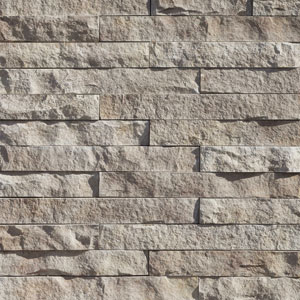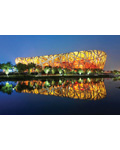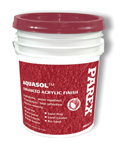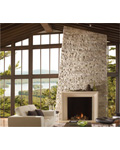Manufactured Techniques for Architectural Colors and Textures
Visual and Biophilic Benefits
In all cases, texture and color confer actual benefits to the building user. “In evidence-based design research, the use of color, texture, and natural character have been shown to provide psychological health benefits to building occupants and city dwellers,” says New York City architect Andrew Franz, RA, principal of Andrew Franz Architect, PLLC.
Part of the benefit comes from biophilia—the instinctive bond between human beings and other living systems—a term coined by German social psychologist Erich Fromm in the early 1960s and later posited as a widely influential sociobiological hypothesis by the American biologist E. O. Wilson in 1984. Another aspect of the health benefit of color and texture, say experts in education, comes from the stimulation of the human mind from texture gradients and tonal variation in a given space, properties that can be sensed visually or by touch, such as smoothness, dimensionality, and color shift. This can imbue a surface or interior space with a unique kind of authenticity.
“Subconsciously your eye and brain notice these variations, in part because of how light picks it up,” says Mutzke. “There is a dynamic interplay that we respond to as building occupants.”
As an example, Claire Weisz, AIA, founding principal of New York City's WXY Architecture + Urban Design, points to how subtle aesthetic flourishes can have an important effect on the development of young minds. For the Day School at Christ & St. Stephens in New York, Weisz incorporated the technique of tonal variation, eschewing a single color in favor of using as broad a palette as possible within a single color choice. The Dutch-style tiles in the student washroom, for instance, were sourced in 13 different shades of white.
“Our research indicates that tonal variation encourages the children to add color and texture to their work in the classroom,” says Weisz. “It not only fosters imagination, but can promote abstract thinking as well.” In this way, color serves the school's primary function—the care and intellectual nurturing of young children—while preserving and celebrating the church's heritage and its important role in the community.
A More Authentic Finish
Another design idea factoring into the focus on biophilia has been the use of more basic, unadorned materials and natural finishes, as well as the look of long-standing building methods such as bricklaying and lapped siding. The big-picture trend is authenticity, says Eldorado Stone's Spann, who reinforces Koolhaas's big idea from a decade ago.
Some designers, like the New York City architect Andrew Franz, have offered the term living finishes to describe the use of materials that are allowed to show their natural characteristics and to exhibit the visually attractive effects of wear and tear. “Some technological advances have yielded undesirable results, with plastified, impermeable, and highly sheened surfaces that offer little of the warmth or connection to the natural world that humans naturally crave,” says Franz.
Untreated woods and other natural surfaces—cork, stone, metals, wool fabrics, and more—offer a direct way to achieve a more authentic, living surface. But as Spann and others contend, authenticity can also be achieved in manufactured products and faux finishes by using more honest, organic materials or by better expression of those natural elements in the finished product—or both.
 |
The intricate detail of small stones with the simplicity of a premanufactured panel gives the impression of a hand-laid, dry-stack set. Photo courtesy of Eldorado Stone |
This is true even if it's a processed, industrialized, or formed application, says Spann. “We've seen manufactured stone that does not look natural or authentic,” says Spann. “The first issue is a lack of visual controls and process controls in those manufacturing plants. Second, the products should be molded from natural stones with proven molds that can capture the most finite details. Third, the molds should not be used for too long, because with overuse the material begins to lose its textural details and crispness.” It's important to identify a manufacturer who is invested in creating authentic and believable products, Spann adds.
As a fourth consideration, utilizing artisans trained in the process of applying multiple layers of oxides within each stone results in more visual color depth. “It's well documented: When you have that human element that gives the finish a certain randomness, the observer is attracted to the result over something that looks too consistent and fake, such as when the highlights are applied by a robotic spray-painting arm,” says Spann. The human craftsmanship and attention to detail is the key to an authentic product.
In addition to the human touch in production techniques, some manufacturers rely on original materials from nature or from other product areas to add to finishes a special hand, defined as its properties that can be sensed by touch, such as resilience or smoothness. This can imbue a surface or space with a different kind of authenticity.
Notice

www.laminart.com

www.parex.com

www.eldoradostone.com









